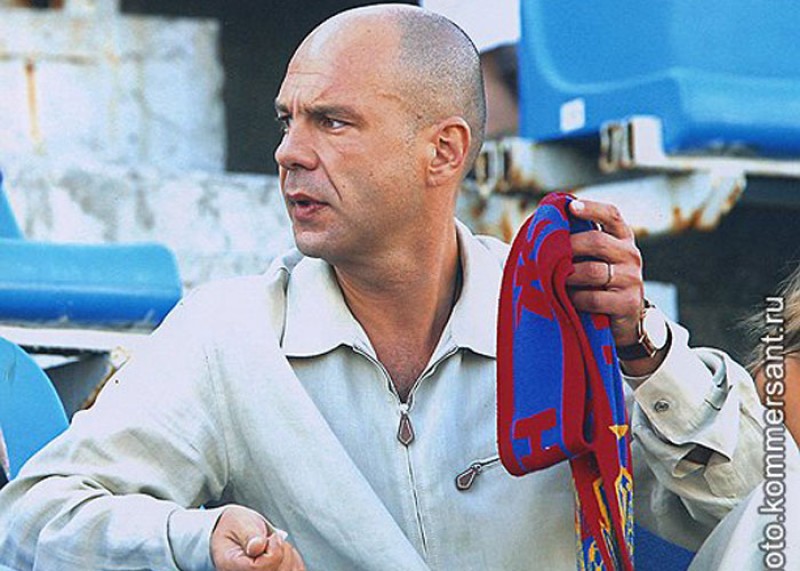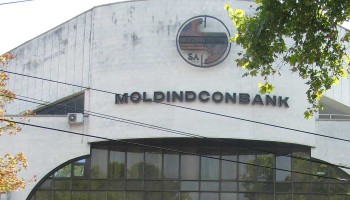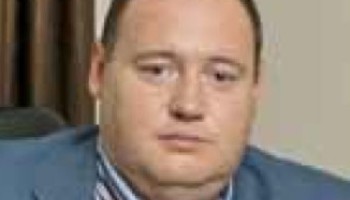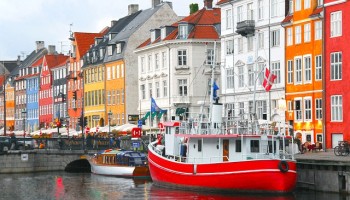Five of the banks have questionable histories, including ties to the US$ 20 billion money laundering scandal known as the Russian Laundromat revealed last year by OCCRP. Although most of these banks were small and barely known in Russia, they have grown significantly since arriving in Crimea.
Their presence raises questions about Russia’s commitment to eliminate money laundering, amid concerns that Crimea could become a money laundering and organized crime zone like other disputed territories on the Russian border.
The Financial Meltdown
It’s been over a year since Crimean voters chose to leave Ukraine and join Russia in a disputed referendum. That quick decision led to a wholesale meltdown of the region’s banking industry.
Ukrainian banks operating in Crimea rushed to close almost 1000 branches in Crimea, following a ban imposed by the National Bank of Ukraine on financial operations in the contested territory. As they left, they may have taken with them the assets and deposits of some local account holders although how much is not clear. They also left with loans they gave out often unpaid.
At the time, Ukraine’s Dnipropetrovsk-based Privatbank was the largest network with 337 branches followed by the Ukrainian state-owned Oshchadbank, with more than 250 branches. Ukraine’s banking regulator refused to cooperate with the Russian occupation authority as relations deteriorated.
Trade with neighboring Ukraine screeched to a halt. Then waves of international sanctions hit the region. Mastercard and Visa suspended operations making life even harder for consumers as suddenly their credit cards became useless plastic.
The Black Sea Bank for Reconstruction and Development and the Morskoy Bank, two local Crimean banks, stayed behind but they couldn’t handle the overwhelming customer demand. People were forced to stand in queues for days to pay fees, taxes and duties of vital importance to their businesses; some fainted from the strain.
The new rulers of the Crimean Federal District attempted to establish a new financial system even as they were hit with a sharp drop in the ruble and a severe shortage of ruble reserves. They quickly passed a law to create a new financial infrastructure and a brand-new financial institution, the Fund for Depositor Protection (FDP).
The FDP’s role was to handle compensation payouts to Ukrainian banks’ depositors and to administer the 'nationalized' property of the Ukrainian banks.
Closely following Kremlin troops into this chaos came a few small Russian banks with controversial pasts and good connections. They were the first to benefit from the nationalization of property. They would be followed by more respected banks later – there are now 28 different Russian banks on the peninsula – but the first benefited the most.
From a US prison cell to Crimean shores
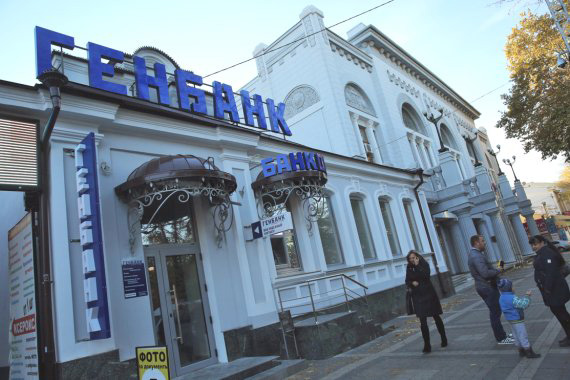 On April 4, 2014, Genbank became the first Russian bank to open its doors in Sevastopol just two weeks after the peninsula became part of the Russian Federation. At the time, Genbank was unknown to most Russians, having branches only in Omsk and Rostov-on-Don.
On April 4, 2014, Genbank became the first Russian bank to open its doors in Sevastopol just two weeks after the peninsula became part of the Russian Federation. At the time, Genbank was unknown to most Russians, having branches only in Omsk and Rostov-on-Don.
The small bank was ranked 315th place among Russian banks in terms of total assets managed. But, since the annexation of Crimea, Genbank has shown tremendous growth. According to its website , the bank operates more than 90 offices in Crimea and is the second largest banking network on the peninsula.
The FDP leased to Genbank real estate and other property previously owned by Ukrainian banks, including ATMs, terminals and infrastructure. Genbank moved into the offices of Ukrainian banks that had pulled out including JCB Pivdennyi, JSC Kredobank and JSB Brokbusinessbank.
Genbank offers its clients Russian Unistream and CONTACT wire transfer services and issues credit cards, with the restriction that they cannot be used for internet payments. The bank is connected to the international payment system via Rosbank, a Moscow-based subsidiary of Societe Generale.
Genbank is partially owned by the controversial Russian banker, Evgeny Dvoskin, who controls 4.8 per cent of the share capital; his wife heads the bank’s board. Dvoskin has been investigated several times by various branches of Russian law enforcement for alleged involvement in money laundering, but has yet to face charges.
Instead, those who have investigated Dvoskin have found themselves in trouble and even sentenced to jail.
Tackling Money Laundering
In 2006 a group of operatives from the Russian Ministry of Interior started an investigation into a group of Russian banks involved in large-scale money laundering operations. Their effort, they say, was among the largest financial investigation ever started in Russia. Officers of the group, most of them retired today, told OCCRP that the turnover of the money-laundering operations they tracked during the three-year investigation exceeded 1 trillion rubles.
The enforcement effort was led by Dmitry Tselyakov, then a major in the Department to Combat Organized Crime and Terrorism. Tselyakov told OCCRP reporters that his group was able to identify a number of organized crime gangs that controlled dozens of small Russian banks. These banks, according to Tselyakov, didn’t conduct any real banking activities, but instead received huge amounts of illegal money in their accounts and then wired the money offshore or turned it into cash.
According to Tselyakov, Evgeny Dvoskin was one of the main characters in their investigation.
“Dvoskin, together with his ex-partner Ivan Myazin, controlled a number of Russian banks through (front men). Later, the Central Bank of Russia revoked the licenses of these banks for laundering criminal proceeds. During just several years these banks laundered and sent to offshore companies dozens of billions of dollars,” Tselyakov said.
Dvoskin’s checkered past is documented in a criminal case file which was put together by Tselyakov’s group with the help of the American FBI.
According to the file, Dvoskin was born 1966 in Odessa and, in 1977, moved to the United States with his parents. At the time he used the surname, Slusker. But in 2001, he was deported from the US after a long history of criminal charges for using forged documentation and, after coming back to Ukraine, took his mother’s surname Dvoskin.
According to the FBI files obtained by OCCRP reporters, while in the US Dvoskin was involved in a number of criminal activities. He was arrested for the first time in December 1989 for robbery and for possession of illegal drugs. The following year, Dvoskin was again arrested for theft.
Over the next 10 years Dvoskin was arrested and sentenced to jail numerous times. At various times he was accused of charges typical of a member of an organized crime gang including illegal possession of a firearm, robbery, bribery of public officials, possession of stolen property and stock fraud.
In a letter to the Russian Ministry of Interior, the FBI claimed that Dvoskin shared a cell in a US prison with Vyacheslav Ivankov, also known as “Yaponchik”, a Russian vor v zakon or “thief-in-law” who was one of the best-known leaders in the ranks of the Russian organized crime. Ivankov was shot by a sniper in 2009 in Moscow and died several months later in the hospital.
The FBI warned Russian police that Dvoskin was likely a close associate of Ivankov.
After coming back to Russia and changing his surname, Dvoskin entered the banking business. In an interrogation with the Russian police, Dvoskin explained his role in the banking sector as “providing safety and stability of financial flows for my clients. These flows go to different banks that I recommend as a financial advisor. I have a broker’s license, got an … education in America, and have great experience in this sphere. I am well known in the banking system. Thus my clients are different banks and companies. The list is very long.”
According to documents from the case file, Dvoskin and his ex-partner Myazin cooperated with scores of Russian banks. Many of those banks were later charged by Russian authorities with money-laundering.
For example, Dvoskin and Myazin worked with Migros bank, Siberian Bank of Development and Falcon bank. All three banks lost their licenses in 2006 and 2007 for violation of anti-money laundering regulations. The amount of money laundered just in these banks totaled about US$ 3 billion.
Tselyakov claims that once his team started to investigate Dvoskin’s banks, they faced unprecedented pressure. “We wiretapped Dvoskin and his partners and found that his group had influential friends in the Russian secret services. They tried to fire me many times. One day the file cabinet of our investigator who led the case against Dvoskin was searched by officers of the Ministry of Interior and Russian security service (FSB). They seized all the important documents from the criminal case,” claimed Tselyakov.
In 2008, Tselyakov, together with his partner, were arrested by law enforcement for attempting to defraud another banker of €1 million euros from another banker. That banker was another controversial Russian businessman, German Gorbuntsov, known in the media as “the black banker”. Dvoskin and Gorbuntsov knew each other Gorbuntsov would later testify. Tselyakov said the charges were false and designed to get rid of him.
Gorbuntsov and his partners have faced multiple charges of money laundering and fraud and a business partner of Gorbuntsov’s was arrested for murdering the country’s top banking regulator. Gorbuntsov is currently charged with money laundering in the Republic of Moldova and is wanted by Russian oligarchs who allege he stole hundreds of millions of dollars from them.
Tselyakov was found guilty of fraud and spent more than four years in jail. The criminal case against Dvoskin was stopped and the banker got legal protection from the FSB as a witness.
Meanwhile, the Russian business daily Kommersant is reporting that Dvoskin’s bank in Crimea will merge with the state owned Crimean bank, ChBRR, although the report could not be confirmed and no details are available.
Users of the “Laundromat”
Genbank was not the only bank to open. Some have connections to a very large money laundering scandal.
 In 2014, OCCRP identified what is believed to be the biggest money-laundering operation in Eastern Europe, called the “Russian Laundromat”. Between 2011 and 2014, organized criminals and corrupt politicians moved US$ 20 billion in dirty funds from Russia to Moldova and then to the European Union.
In 2014, OCCRP identified what is believed to be the biggest money-laundering operation in Eastern Europe, called the “Russian Laundromat”. Between 2011 and 2014, organized criminals and corrupt politicians moved US$ 20 billion in dirty funds from Russia to Moldova and then to the European Union.
The complex scheme included dozens of Russian banks including some controlled by Russian President Vladimir Putin’s cousin, Igor Putin. The money transfers were supported by fake contracts between phantom offshore companies run by proxies who hid the real owners.
The bogus transfers were then legitimized in court decisions by Moldovan judges, many of whom are now under investigation for bribery. Moldovan authorities have launched a criminal investigation into the “Laundromat” scheme but so far Russian law enforcement has not cooperated with Moldovan authorities.
Meanwhile, some of the Russian bankers involved in the “Laundromat” operations are now doing business in Crimea. According to documents seen by OCCRP reporters, Baltica, a bank from St. Petersburg, was one of the most active users of the “Laundromat.” Moldovan authorities claimed that bogus companies with accounts in Baltica moved more than US$ 2 billion to Moldova from 2011 till 2014.
The director of Baltica, Oksana Chernyak, denied any wrongdoing in a letter to OCCRP.
Businessman Oleg Vlasov is Baltica’s largest shareholder, owning 20 percent of the bank. Vlasov was also mentioned in a number of documents generated by Tselyakov’s anti-money laundering group. “According to wiretaps, Vlasov was connected to the biggest money launderers in Russia. We even interrogated him, but didn’t manage to bring any charges against him. The whole investigation was stopped and I was arrested,” says Tselyakov.
Vlasov, together with some partners from Baltica, controls the Verhnevolzhskiy bank. Verhnevolzhskiy was established in 1990 but before coming to Crimea it mainly operated in the Yaroslavskiy region of Russia, where it had a number of subsidiaries in small regional towns.
Verhnevolzhskiy entered Crimea in 2014 and now operates 26 offices. In December 2014, the Central Bank of Russia fined Verhnevolzhskiy for violating anti-money laundering regulations. The Central Bank didn’t disclose any details of the violation.
Another Russian bank which was involved in the "Laundromat" is Tempbank. Today it also operates two offices in Crimea. Tempbank was established in 1989 and in 2014 was included in a US sanctions list made in response to events in Syria and not Crimea.
According to a U.S. Department of the Treasury press release, the American government took these actions to put pressure on the Syrian regime and its supporters. “The Treasury Department designated Moscow-based Tempbank and Mikhail Gagloev, a senior executive of the bank, for providing material support and services to the Government of Syria, including the Central Bank of Syria and SYTROL, Syria’s state oil marketing firm”, said the U.S. Department of Treasury in its statement.
More Money Laundering Connections
K2 is a small bank from the Northern Caucasus republic of Karachay-Cherkessia and is ranked the 471th largest bank in Russia based on assets under its management. The bank was established in 1994 in Vladikavkaz, Northern Ossetia.
Since then, the bank has changed its name and headquarters a few times. After the annexation of Crimea, K2 opened six offices in Sevastopol, Simferopol, Feodosia and Evpatoria. The bank doesn't operate any of the basic tools used by commercial banks nowadays such as ATMs or pay terminals -- kiosks operated by banks to allow customers to pay their bills easily.
The share capital of the bank is divided between 14 people, with each of them controlling a stake of up to 10 percent. These shareholders are not well known in banking circles in Russia, but OCCRP found that some of them were connected with other financial organizations shut down by authorities for money laundering.
One of the main shareholders of K2 with 10 percent is Margarita Chukanova. According to the Russian commercial register, in 2006 Chukanova was a minority shareholder in the nonbanking credit organization, RK-Center. The operating license of RK-Center was revoked by the Central Bank of Russia in 2006 for money-laundering violations. The Central Bank claimed that clients of the RK-Center made fake payments in excess of 25 billion rubles or about US$ 1 billion at the time to foreign companies.
Another small Moscow-based bank which has opened in Crimea is Adelantbank. The bank was established in 1992 as Lesopromishlenniy bank and in 2012 changed its name to the current one. Adelantbank ranks 561th among Russian banks based on assets under its management. . Adelantbank operates three offices in Crimea, one in Evpatoria and two in Simferopol. The bank has no ATMs or pay terminals and one of its branches in Simferopol is located in the office previously occupied by the Kyiv-based Finance and Credit bank.
The share capital of the bank is divided between 11 persons, all of them controlling small stakes.
One of owners of Adelantbank is Maxim Lipskiy. According to the Russian Central Bank, in 2014, Lipskiy through a UK company, Brys Worldwide Ltd, held a significant stake (9.8 per cent) in another Moscow bank, Sovinkom. In 2014, the Central Bank revoked the license of Sovinkom for violation of various banking laws including anti-money-laundering. The regulator claimed that in 2013 clients of Sovinkom made dubious financial transactions worth more than 6.8 billion rubles (about US$ 207 million).
Another owner is Anna Lyga who, in 2013, through a set of Russian companies, was an owner of 6,6 % of Genbank, the bank with the second largest network in Crimea.
Note: This story has been corrected. Inaccurate geographical information has been removed. OCCRP regrets the error.
